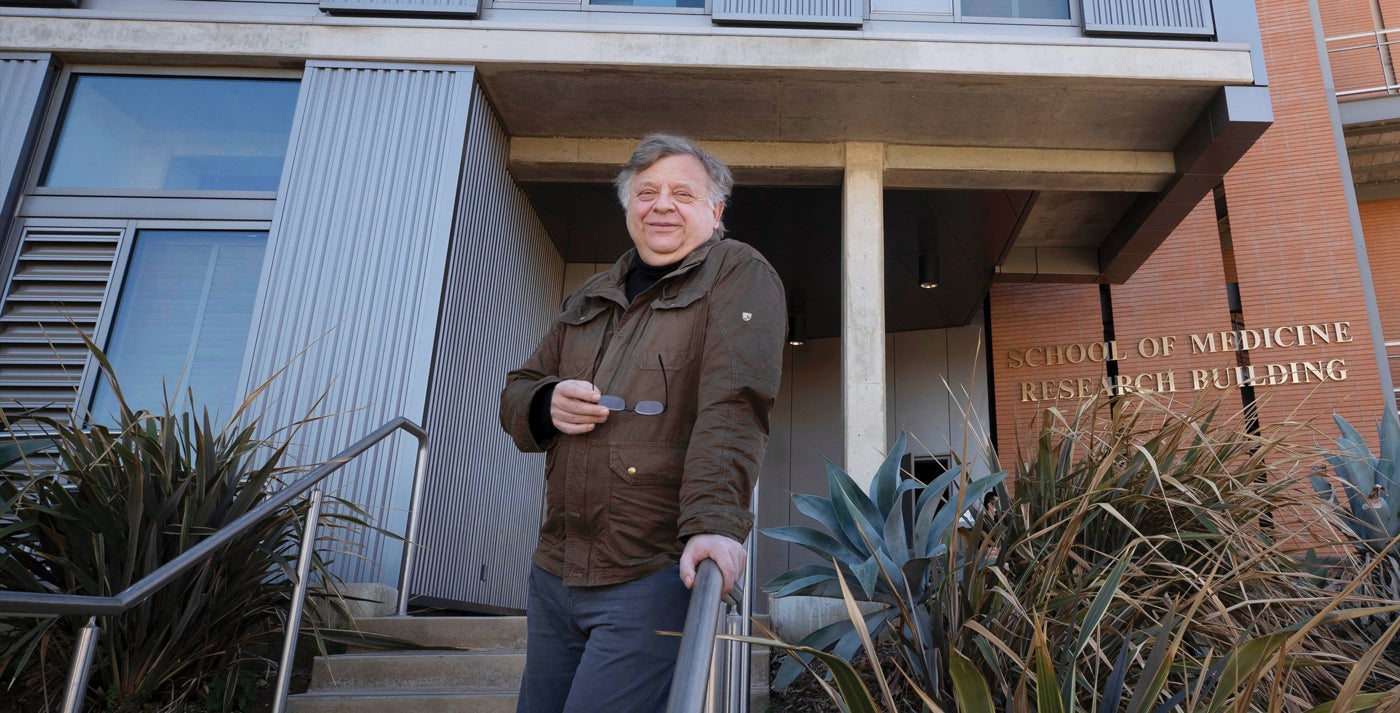TRUTH IN NUMBERS
The School of Medicine’s newest endowed chair uses data — lots of data — to aid the fight against cancer.
By Iqbal Pittalwala
(UCR/Stan Lim)
dam Godzik, an expert in bioinformatics, joined the UC Riverside School of Medicine in 2018 and holds the Bruce D. and Nancy B. Varner Presidential Endowed Chair in Cancer Research at UCR. After receiving his doctorate in computational physics at the University of Warsaw in Poland, Godzik took an interest in modeling and analyzing biological and medical data. Here, he discusses how the field of bioinformatics has revolutionized the treatment of cancer and other diseases.
What role does technology play in cancer research, and how does your work fit into the bigger picture?
Technology plays an increasingly important role in cancer research — and in medicine in general — including cancer diagnosis and treatment. Historically, cancers have been diagnosed and classified based on the macroscopic features or tissue of origin and stage — and this classification is still used in clinical oncology. Increasingly, we can “look under the hood” at molecular features of given cancers and answer questions, such as which genetic abnormalities are driving the individual tumors or what is the status of the immune system in and around the tumor, and tailor treatment to the specifics of the patient.
What is bioinformatics?
Bioinformatics is a broad research field between biology and computer science. Any time a new technology is developed and provides us with a new type of data, we need new algorithms to process, analyze, and ultimately derive new insights from this data. This is the job of bioinformatics. It can be viewed as a “glue” that connects new technologies with their practical applications — first in research and then in the clinic.
How is bioinformatics used in cancer research?
It is used to process data provided by the new technologies, such as cancer genomic sequencing and transcription/proteomics, to find the molecular-level classification of cancers, search for new drug targets, and optimize treatments.
Is it used in other areas?
Bioinformatics is used in all fields of biology and medicine. We sequence cancer genomes, but also genomes of people with other diseases. We can ask which mutations lead to cancer, and also why a bacterium or virus is benign while another causes a deadly disease.
Has bioinformatics led to other emergent technologies?
Initially, DNA sequencing was performed by expensive and slow sequencing of long DNA regions. Everybody knew it would be easy and cheap to sequence shorter fragments, but it didn’t make sense to do so until bioinformaticians figured out how to assemble genomes from short fragments, making possible the explosion of genomics we saw in the last several years. What we see as new technology in almost all cases is a hybrid of hardware and software to process the raw data.

